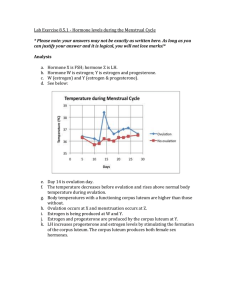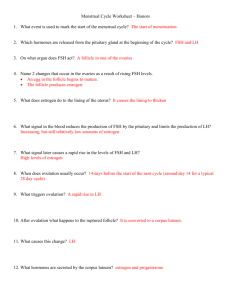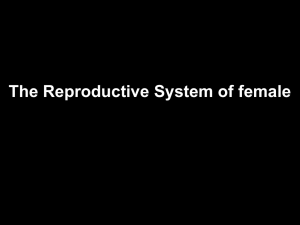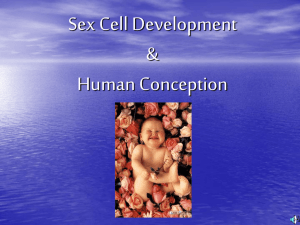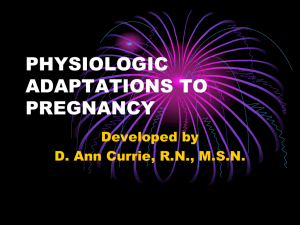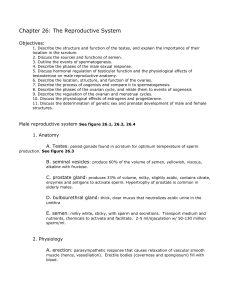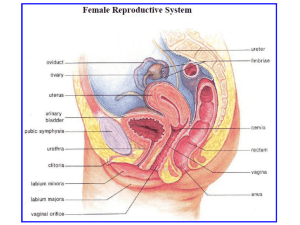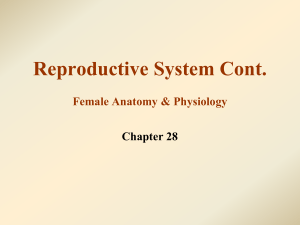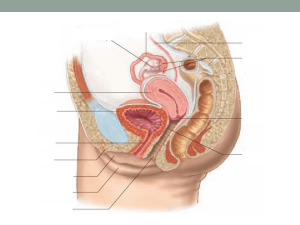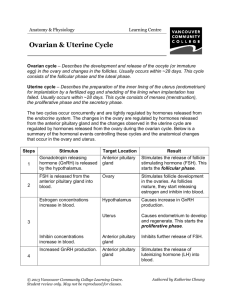Medical Terminology Chapter 15 and 16 outline
advertisement
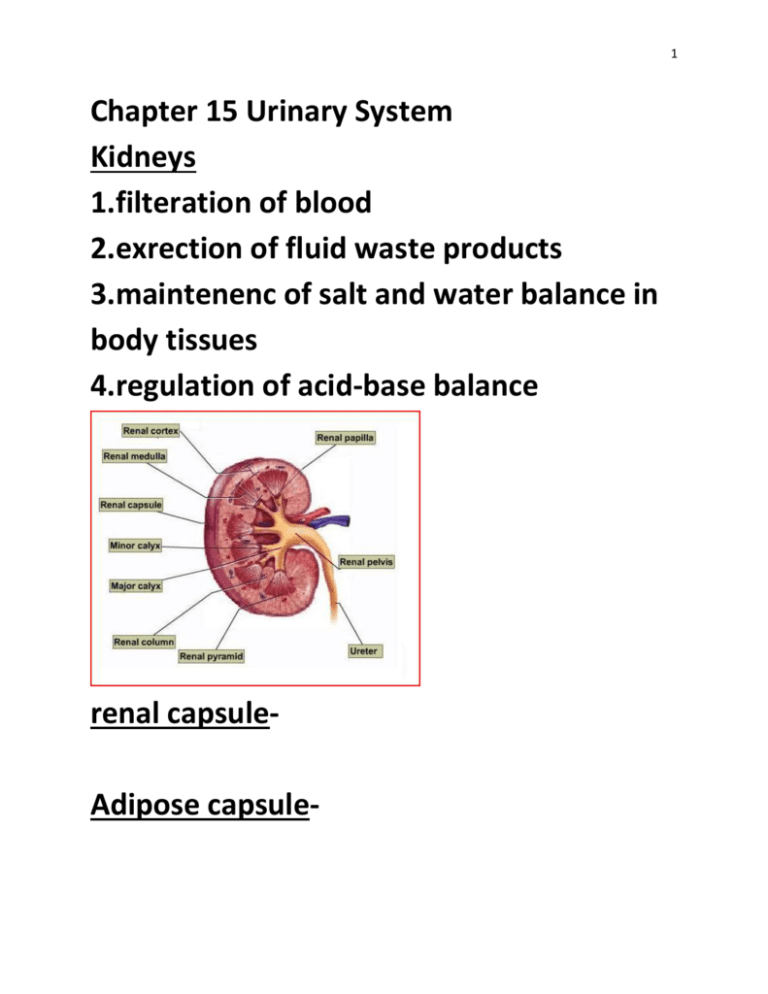
1 Chapter 15 Urinary System Kidneys 1.filteration of blood 2.exrection of fluid waste products 3.maintenenc of salt and water balance in body tissues 4.regulation of acid-base balance renal capsuleAdipose capsule- 2 Blood supply NephronsRenal vein Organization Helium Renal cortexRenal medullaRenal pyramid Renal pelvisCalyces- 3 Ureters urinary bladderurethra- 4 1.famale urethra is embedded in the muscle of the front wall of the vagina between the clitoris and vaginal opening and is around 1.5 2.male urethra passes through the prostate gland where two ducts carrying the male sex cells joint it where it than leads through the penis to the outside and is around 8 inches long General Information on urination: -micturition- Chapter 16 Female Reproductive System The Female Reproductive System The female gonads, ovaries, are located within the lower abdominal cavity 5 -The ovary contains many follicles composed of a developing egg surrounded by an outer layer of follicle cells 6 Ovarian Cycles 7 External Genitals Vulvalabia minoralabia majoraclitoris- 8 Hormones and Female Cycles The ovarian cycle is hormonally regulated in two phases estrogen-secreted by follicles before ovulation; the corpus luteum secretes both estrogen and progesterone after ovulation. -Hormones from the hypothalamus and anterior pituitary control the ovarian cycle. 9 -Menstrual cycles vary from between 15 and 31 days -Rising levels of estrogen in the blood trigger secretion of LH, which stimulates follicle maturation and ovulation (day 14, or midcycle) -LH stimulates the remaining follicle cells to form the corpus luteum, which produces both estrogen and progesterone -Estrogen and progesterone stimulate the development of the endometrium and preparation of the uterine inner lining for implantation of a zygote 10 -If pregnancy does not occur, the drop in FSH and LH cause the corpus luteum to disintegrate -The drop in hormones also causes the sloughing off of the inner lining of the uterus by a series of muscle contractions of the uterus. Fertilization 11 Zygote Blastocyst- Implantation -Human chorionic gonadotropin (hCG) is secreted by the chorion, and prolongs the life of the corpus luteum until the placenta 12 begins to secrete estrogen and progesterone The First Trimester The Second Trimester The Last Trimester Birth Birth is a positive feedback hormonal mechanism -During birth the cervix dilates to allow passage of the fetus 13 -Uterine contractions propel the fetus through the birth canal, usually head first First Stage Second Stage Third Stage 14 Milk Production -Nursing mothers have their hormone levels and uterine size return to normal much faster than non-nursing mothers Breasts develop the capability for milk secretion about the mid point of pregnancy -Secretion of milk does not occur until delivery, and the action of prolactin -Suckling by the infant causes production of oxytocin to promote release of milk into the ducts emptying into the nipple. 15

